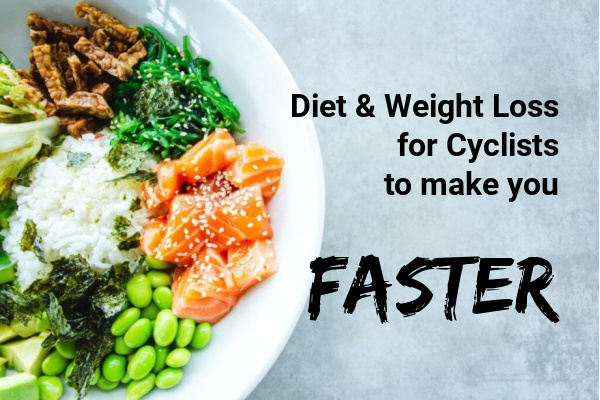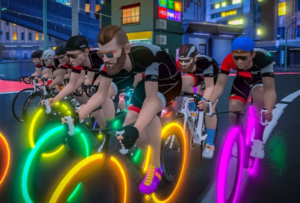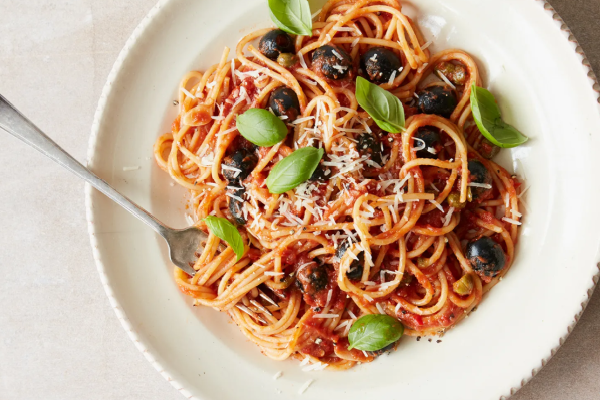
Diet And Weight Loss To Make You Faster
Nutrition and food choices are a key component of weight loss for all endurance athletes, including cyclists. When done correctly, weight loss can have a huge
A funny thing happened when discussing the topic of Continuous Glucose Monitoring with Supersapiens test cyclist Pete Butler during Episode 2 of the Virtual Velo Podcast. A level 50 Zwifter since the Beta days, Pete admitted to feeling kinda dumb for neglecting his nutrition when training and racing indoors. After implementing his outdoor nutrition protocols when inside, his glucose scores improved and his performance.
Not funny, haha, but interesting, unintended. How many virtual cyclists fall into the same trap? What is it about training and racing on Zwift that makes us less likely to plan our nutrition as we do outdoors? Are you one of these cyclists? A 2022 study published in the British Journal of Nutrition aimed to explore the carbohydrate intake of virtual cyclists and esports competitors.
All competitive cyclists know how challenging it is to eat when racing outdoors. Tactical and bike handling requirements get in the way, and we put off the precarious reach into the rear pocket of our jersey for when the pace eases. On long ultra-endurance events, it’s tough to carry enough.
That time never comes, but the ‘crack’ that follows inadequate carbohydrate (CHO) consumption does. We are left feeling kinda dumb for losing the nutrition race within a race. Virtual cycling and esports competitors don’t have these worries.
When racing from the comfort of your own home, it should be much easier to implement your nutrition plans. Food and hydration are efficiently planned and readily accessible. The unique environment created by indoor cycling presents an opportunity for athletes to meet nutritional requirements successfully, or so the authors thought.
The scientists also believed that while the athletes may not meet overall CHO recommendations, they would meet intra-session targets. The harder the cyclist trained or the greater demands of the event, the planned session intensity would influence adequate CHO intake before, during, and after. In addition, they felt the more experienced cyclists of higher ability would identify key sessions and would be more likely to meet CHO recommendations.
For optimal performance and the prevention of exercise-induced energy imbalance, current endurance nutrition guidelines for athletes recommend athletes consume 1-4g of CHO/kg of body weight one to four hours before exercise. Athletes should consume up to 60 g/h for rides lasting one to two hours. The guidelines advise athletes to consume up to 90 g/h for longer durations. For optimal recovery, 1-1.2g of CHO/kg within the hour following exercise.
The authors assessed food intake pre, during, and post indoor cycling training sessions using a subjective and objective questionnaire for the cross-sectional, observational study. The study included a pool of 106 cyclists who had completed a virtual training session or race in the last 24-hours. The 81 questions ranged from demographics, ride details, and food recall, to further information on fluid and supplements consumed pre-, during, and -post.

75-percent of virtual cyclists and esports competitors consumed NO CHO during sessions—when proper fueling is essential to optimal performance. The finding astounded the authors, who hypothesized the unique advantages of indoor scenarios make the practice of appropriate race day nutrition less challenging than real-life. Data for all three significant time points indicated markedly sub-optimal CHO intake. In short, even virtual cyclists are chronically under-fueling, leading to likely under-performance. Why?
We are not naive to the devastating impact Extreme Dieting, disordered eating, and eating disorders pose to the virtual cycling community. Or the scientific link between Overtraining and Nutrition and the severe consequences of sport-related energy deficiency—RED-S. Yet we continue to make the same mistakes we have when outdoors despite many physical barriers that stand in the way.
As the results of this study show, and many that have preceded it, the obstacles that prevent the majority of endurance athletes from making sound nutritional choices aren’t physical but mental.
The first step is to realize that the tendency to overdo it exists and commit to altering your unhealthy behavior. By educating yourself on the warning signs of under-fueling, you can catch it before it develops into something worse. If your training is inconsistent, you have pangs of hunger periodically throughout the day, you experience mood swings and irritability, sleep quality is poor, and you lack focus, RED-S may be the cause.
Be honest with yourself, identify the signs of RED-S and overtraining, and make the proper nutrition and recovery decisions. Being a cyclist isn’t easy, especially when an amateur athlete with a family and a job. Make it a bit easier by doing the right thing for yourself.
The answer most often received by the authors was “the lack of need to fuel due to perceived session demands.” The subjects didn’t feel it was necessary to eat when racing or training indoors when events are routinely shorter in duration because they didn’t think the effort required it. While the finding is in line with data reflecting the habits of some real-life racers, it is surprising because the challenges outdoor competitors face do not exist.
The likelihood that more experienced hi-level racers would have learned from previous mistakes and settled on an appropriate strategy, as the authors predicted, did not occur. They were just as likely to CHO under fuel during all three important time parameters as their recreational counterparts when indoors. Pete Butler is an exception to the rule. Where do you fall?

Nutrition and food choices are a key component of weight loss for all endurance athletes, including cyclists. When done correctly, weight loss can have a huge

Photos are rolling from Mt. Blue Sky/Bob Cook Memorial Hill Climb p/b Team Evergreen on that was held this past weekend. The day lived up

Pad Thai is a popular street food in Thailand, which is whipped up quickly and packed full of flavor. It’s one of our favorite post-ride

Tubless Tires: Myth or Magic? Justin Bolinger of I Know a Guy Bicycles “UNBOXES” the Truth about this setup (Should you go Tubeless?) Recent Posts

Last week, Douglas County hosted the Natural Grocers Criterium at their sheriff’s training facility, and the camera of Ryan Muncy/Ryan Muncy Photography was on the scene

When you are looking to refuel at lunchtime, go for carbs and quality protein – this pasta dish is ideal. Cycling takes energy, and energy come